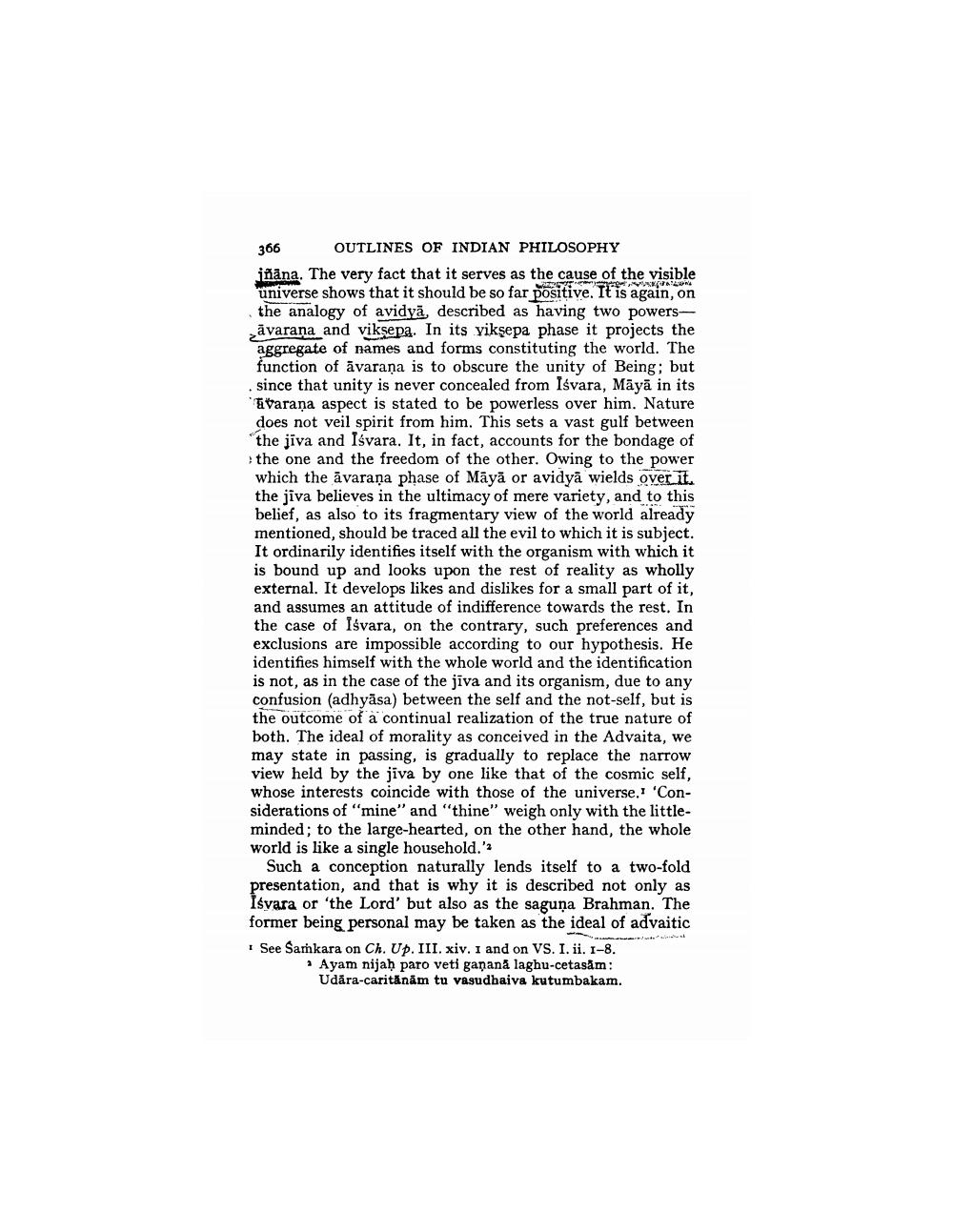________________
366 OUTLINES OF INDIAN PHILOSOPHY ibāna. The very fact that it serves as the cause of the visible universe shows that it should be so far positive. It is again, on the analogy of avidyā, described as having two powersavarana and viksepa. In its viksepa phase it projects the aggregate of names and forms constituting the world. The function of āvarana is to obscure the unity of Being; but since that unity is never concealed from Isvara, Māyā in its avarana aspect is stated to be powerless over him. Nature does not veil spirit from him. This sets a vast gulf between "the jiva and Iśvara, It, in fact, accounts for the bondage of the one and the freedom of the other. Owing to the power which the avarana phase of Māyā or avidyā wields over it. the jiva believes in the ultimacy of mere variety, and to this belief, as also to its fragmentary view of the world already mentioned, should be traced all the evil to which it is subject. It ordinarily identifies itself with the organism with which it is bound up and looks upon the rest of reality as wholly external. It develops likes and dislikes for a small part of it, and assumes an attitude of indifference towards the rest. In the case of Isvara, on the contrary, such preferences and exclusions are impossible according to our hypothesis. He identifies himself with the whole world and the identification is not, as in the case of the jiva and its organism, due to any confusion (adhyāsa) between the self and the not-self, but is the outcome of a continual realization of the true nature of both. The ideal of morality as conceived in the Advaita, we may state in passing, is gradually to replace the narrow view held by the jiva by one like that of the cosmic self, whose interests coincide with those of the universe. 'Considerations of "mine" and "thine" weigh only with the littleminded; to the large-hearted, on the other hand, the whole world is like a single household.'
Such a conception naturally lends itself to a two-fold presentation, and that is why it is described not only as Isvara or 'the Lord' but also as the saguna Brahman. The former being personal may be taken as the ideal of advaitic See Sankara on Ch. Up. III. xiv. 1 and on VS. I. ii. 1-8.
* Ayam nijah paro veti gañana laghu-cetasām: Udara-caritanam tu vasudhaiva kutumbakam.




